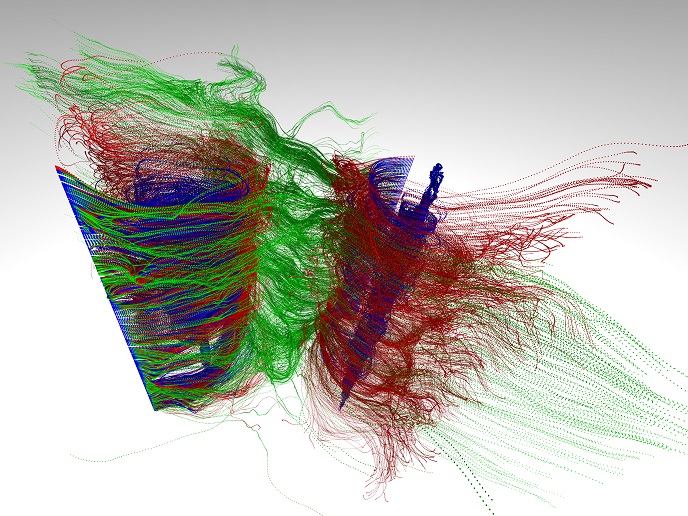Smoothing down the bumps: Research sheds new light on turbulence dynamics
Turbulence is commonly observed in everyday phenomena such as fast flowing rivers, smoke from a chimney or the air around aircraft wings. It is also present in intense ocean currents, the lava discharged from a volcano or intergalactic space. In fact, the flow of most fluids is turbulent, including blood movement in our arteries. While the experience of turbulence is all around us, the mechanisms underlying this bumpy phenomenon are difficult to control and understand. Caused by excessive kinetic energy that overcomes the effects of fluid’s viscosity, turbulent flow is by nature irregular and therefore hard to predict. “The interactions within turbulence create a very complex phenomenon that no existing algorithms can accurately describe. Progress in the field has been so slow that there are currently no computational resources that can even perform a brute-force simulation of the air around an aircraft wing! As a result, engineers and applied mathematicians resort to the construction and use of mathematical models to predict turbulence effects,” explains Luca Biferale, coordinator of the EU-funded NewTURB (New eddy-simulation concepts and methodologies for frontier problems in Turbulence) project.
Mapping turbulence at multiple scales
Turbulent flow spans a broad range of length scales; bridging them in a numerical simulation is notoriously difficult as state-of-the-art computational systems require extensive amounts of computing time. That is what the NewTURB team set out to do: develop a series of multi-scale models for high-performance computations that overcome these challenges. The principal idea was to perform a ‘surgical’ removal of the number of parameters – degrees of freedom – that define the turbulent configuration by modifying the Navier-Stokes equations in a controllable way. “Our main focus was on predicting under which conditions the turbulent flow tends to accumulate the energy of stirring forces at large scales or dissipate it at very small scales. The first case would look like a big tornado (see figure) in the atmosphere, while the second one a millimetre-sized yet intense swirl such as those created inside internal combustion engines,” says Biferale. Using mathematical models and high-performance computing, the project team demonstrated that a set of chiral interactions that change the mirror symmetry – and the flow’s helicity – can alter turbulent flow behaviour. Not previously known, it should now be considered as a basic property for all incompressible flows.
Identifying universal laws within turbulence
Unravelling the universal statistical properties that all turbulent flows share despite their different driving mechanisms or their particular flow geometries has been a long-standing challenge. “Proving the hypothesis of universality in turbulence has been a ‘holy grail’ for physicists in the field,” notes Biferale. “Although we cannot prove universality from the equations that rule the system we know from laboratory and numerical experiments that it holds true for small-scale turbulent fluctuations, recovering a perfectly rotational-symmetric statistical behaviour.” Disentangling universal from non-universal properties in shear or rotating turbulence across all scales has therefore been the main focus of the project work concerning both the flow field and the advection of particles by it.
Unsolved problem
NewTURB clarified important aspects concerning turbulent flow dynamics using clear evidence from numerical simulations. “However, we are still far from offering a complete description of turbulence. We have very little proof based on the motion equations. Turbulence is one of the oldest unsolved problems in physics,” concludes Biferale.
Keywords
NewTURB, turbulence, numerical simulation, multi-scale dynamics, high performance computing, big data, Navier-Stokes equations, mirror symmetry



